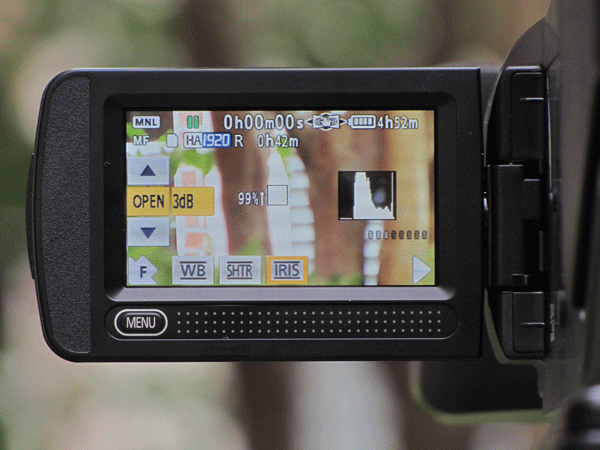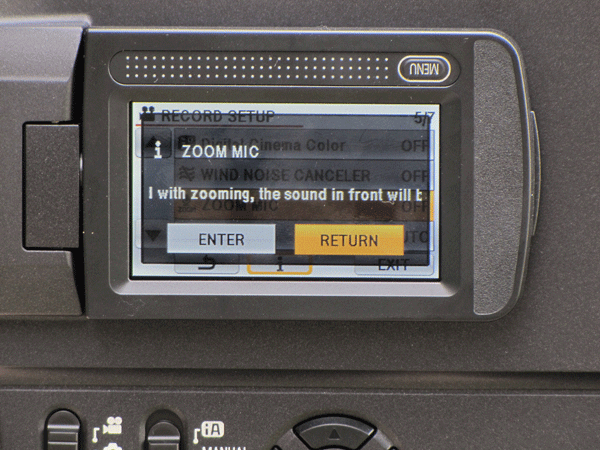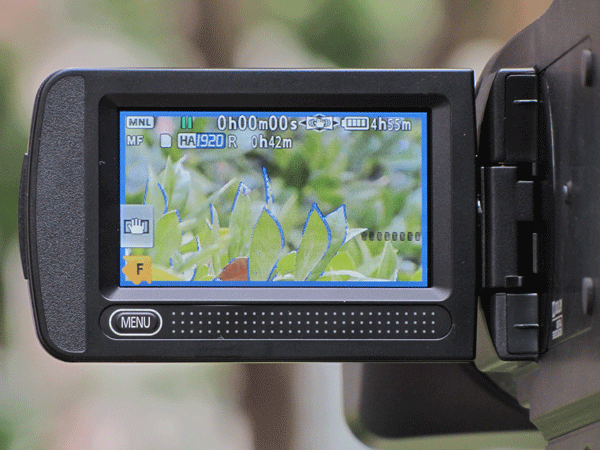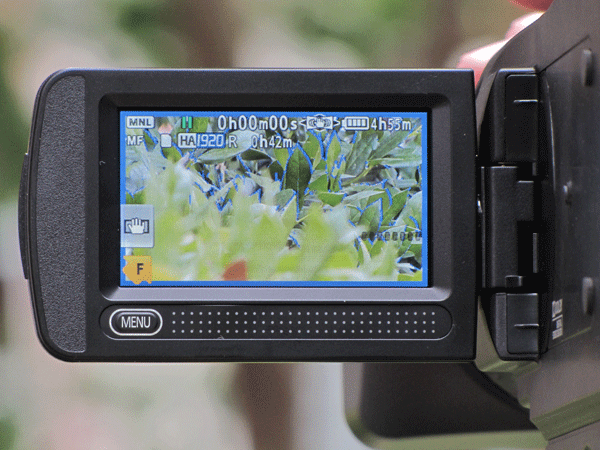Review: Panasonic AG-AC7P Shouldermount Camcorder
A physically similar follow-up to Panasonic's more professional AG-HMC80 AVCCAM, the AC7P uses the more consumer AVCHD format, loses a few ports, and drops $1,200 from the price tag, making the $1,300 (MSRP) AG-AC7 the least expensive actual on-shoulder camcorder you can buy. But what do you get?
Niceties There were several little features of the AC7 that I did like and wish I could take with me and put into other camcorders. One handy feature is the Luminance box. A small square in the center of the screen that gives you a 0-99+% value of whatever is in the box. Like a tiny spot-meter, you can zoom in to something in the shot and get an exact, real-time luminance value for that object using your current settings. There's also a histogram which shows you where the balance of your image data is in a light-to-dark range.

The AC7's handy Luminance box
There's an "I" at the bottom of the menu screen that you click to enter Information mode, and get a little description of the various parameters you can set, such as AGS mode, which will pause recording when the camera goes upside down or sideways. The handiness of Information mode is limited because it turns itself off as soon as it gives you just one tidbit of info. But it's good to have handy if you need to figure out a feature in the field.

Information mode
The AC7 also features blue focus "peaking" that greatly assists manual focus, but it doesn't require you to constantly turn it on and off to use it. That's another feature the pro camcorders need to steal. The camcorder obviously knows when you are rotating the focus ring, so a blue border appears on the LCD screen and the edges in focus are highlighted by blue.
As you rotate the focus, the blue edges move. Even with the limited resolution of the built-in LCD screen, the camera clearly indicates exactly where the high-contrast edges are in the shot. After a couple of seconds, all the blue goes away on its own, ready to reappear the next time you start to adjust the focus.


Note how the blue edges move as you rotate the focus on the AC7.
I've seen similar colored peaking systems on more professional camcorders, but the AC7's auto on/off is something I became accustomed to rather quickly, and I wish my higher-end HD camera offered it. It's like a stereo that needs you to touch only one button-the Play button-and it turns itself on, changes inputs, and begins playing the CD. The AC7''s auto-appearing/disappearing Manual Focus Assist's intuitive design helped just enough without getting in the way.
Conclusion
The AC7 sits unchallenged in terms of size and affordability. But what it gives up to keep the price down may make it less worthwhile to many shooters. The image quality on both the HMC80 and the AC7 are not equal to the other stellar camcorders in Panasonic's pro lineup. In fact, Panasonic ought to position these camcorders differently, on a lower tier, or as high-end consumer camcorders.
I found the HMC80 to be a much better solution in terms of usability (the eyepiece, physical controls), and connectivity (I/O ports). The HMC80 is, essentially, an affordable consumer camcorder, that you can more easily connect accessories to than most consumer models, and it also gives you the ability to adjust more settings on than you could on a tiny palmcorder. With the AC7, you save half the cost, but lose much of that connectivity and easy accessibility.
While the AC7 does give the operator some measure of control, and makes that control fairly easy to get to, the end user will need to determine if the larger physical camera gives any additional value to a palmcorder's capabilities. In some cases, size (and shoulder-mounting) matters, and that's what the AC7 provides. For a certain group of end users, the AC7 will deliver what they need, but they'll also need to understand its limitations before buying it to use in the field.